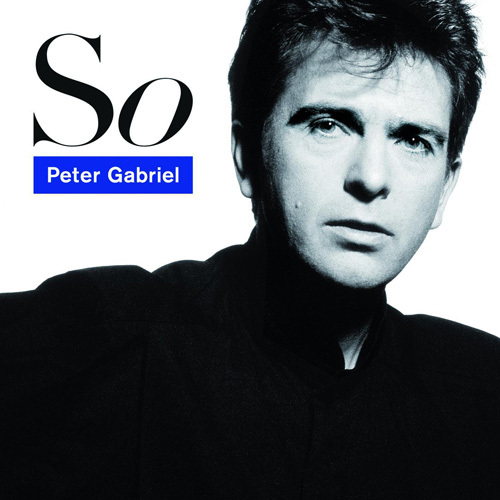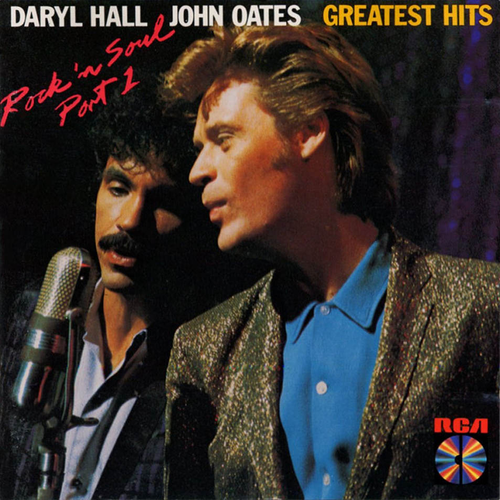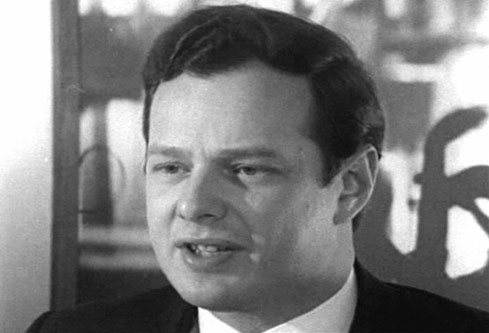Each year the Rock and Roll Hall of Fame selects another cadre of artists to enshrine into musical immortality. For the 2014 extravaganza, set for April 10th at the Barclay’s Center in Brooklyn, NY, the choice of inductees seems to be both pleasing and infuriating people at equal turns. The internet social networks have been alight with debate and conjecture, proving once more that no matter what, you will never please everyone. For good or for ill, the next round of musicians has been chosen, armchair critics be damned. Opinions will always differ, but one thing is certain, the Rock and Roll Hall of Fame certainly went for a diversity of musical genres this time around.
First up is a choice truly in keeping with the spirit of what rock n roll is all about. The legendary Kiss, formed in 1973 in New York City, will be inducted right in their own home town, an honor within an honor for them. Previously nominated in 2010, the band is given credit for being one of the progenitors of heavy metal and come to represent the simple, party time arena rock that has sustained their career for 40 years. Known for their outrageous, larger than life stage outfits and signature black-and-white face paint, the combination of Paul Stanley, Gene Simmons, and Ace Frehley influenced countless rock and metal outfits. A good argument can be made that many involved in the grim second wave of Scandinavian black metal were once captivated by the over-the-top pageantry of Kiss. The induction of Kiss is an important step toward the Rock and Roll Hall of Fame recognizing a bit more of heavy metal’s brightest lights for future years. Perhaps this will one day open the door for the likes of Iron Maiden and Judas Priest for induction.
- Casablanca
From a rock band whose career spans forty years to one who only lasted a mere seven years, the induction of grunge rockers Nirvana should surprise no one. Forming in 1987 in Aberdeen, WA, the trio of Kurt Cobain, Krist Novoselic, and Dave Grohl turned the hard rock world on its head with their brand of angst-ridden distortion and ragged throaty vocals, spearheading the grunge scene which exploded out of its Seattle roots in the late 1980’s. Their 1991 masterpiece Nevermind has sold over 30 million copies worldwide to many a benchmark album with its quiet melodic verses and explosive choruses. The album propelled Nirvana to stratospheric heights and ensured the band became not only the face of Generation X, but the very crucible from which all alternative rock would be distilled going forward. Their follow-up, In Utero (1993), may not have achieved the same numbers, but it did extremely well and showed Nirvana was more than a one-trick pony. Tragically in 1994, the suicide of singer Kurt Cobain put an abrupt end to one of the single most influential acts in all of modern music. This is the very first year Nirvana was eligible for induction, making the honor even more prestigious.
- DGC Records
With arena rock and grunge being represented, the next inductee is not a band but a single musician. British vocalist Peter Gabriel forged an unforgettable career with prog-rock sensation Genesis before going on to a solo career most musicians can only dream about. This April will mark Gabriel’s second induction into the hall, the first coming with the aforesaid Genesis in 2010. Hits like “Sledgehammer”, “In Your Eyes”, and “Shock the Monkey” reached tremendous heights of commercial success. The much-lauded and highly decorated vocalist has collaborated with everyone from David Bowie to Martin Scorcese over the years. Gabriel’s voice has become an integral and much-loved piece of the musical tapestry of the past forty years.
- Geffen
Next up are one of the most popular duos of the 1970’s and 1980’s, Hall & Oates. Darryl Hall and John Oates met while escaping a gun battle between two rival gangs in 1967, while both attended Temple University in Philadelphia, PA. In a true tale of serendipity, the two went on to record six number one Billboard Hot 100 hits making their music a mainstay on radio stations for years and years. Mixing rock, rhythm and blues, and synth-pop, Hall & Oates dubbed their music ‘rock and soul’. The duo’s creative marriage has been arguably one of the most fertile in the entire history of pop-rock.
- RCA
The name Linda Ronstadt may not evoke the raucous images of rock stars and loud concerts, but she nonetheless finds herself alongside Kiss, Nirvana, and Peter Gabriel in this year’s crop. As she has recently been diagnosed with Parkinson’s disease, many are complaining that the Rock and Roll Hall of Fame took too long to induct Ronstadt and she will now be too sick to receive the award in person. A shame indeed because Ms. Ronstadt’s voice was one of the finest of her generation, and her influence on immortal acts such as The Eagles is well-known. The Tucson, AZ native could do country, pop, and everything in between. She has collaborated with everyone from Johnny Cash to Frank Zappa, Dolly Parton to Flaco Jimenez. Ms. Ronstadt was once likened by Christopher Loudon of Jazz Times to be a musical chameleon, one who can do it all yet remain her own distinct self. Her influence on the countless female singers and songwriters who came after her is immeasurable. Present or not, the multi-platinum Grammy winning singer will find herself enshrined in the hall this April, and who could argue with that?
- Asylum
Next comes the extremely popular but eccentric Cat Stevens. Also known as Yusuf Islam, “Cat” Steven Demetre Georgiou was born in London within the thick of the theater district of Soho. His early exposure to the world of music, especially The Beatles, set him on the path to releasing multiple triple platinum albums. Overcoming a bout of tuberculosis which nearly killed him, Cat Stevens reinvented himself, eventually converting to Islam in 1977. He then left the world of music to focus on philanthropy and education in the Muslim world before returning decades later to begin making albums again.
- A&M
The next entry included in this year’s crop is a backing band. While that might not sound like much, when one considers who they’ve backed it’s enough to take a person’s breath away. The E Street Band from Asbury Park, NJ, has been Bruce Springsteen’s primary group since 1972. As if that wasn’t accomplishment enough, the lineup of Clarence Clemons, Gary Tallent, Danny Federici, Vinnie ‘Mad Dog’ Lopez, and David Sancious, and later Steven Van Zandt, Nils Lofgren, Patti Scalfia, Roy Bittan, and Max Weinberg have recorded with a colossal array of superstars. No less than the likes of Bob Dylan, Meat Loaf, Neil Young, Lou Reed, Bonnie Tyler, David Bowie, Peter Gabriel, Stevie Nicks, Sting, Ringo Starr, The Grateful Dead, Santana, Tracy Chapman, Aretha Franklin, and Lady Gaga, have collaborated with them, making the E Street Band one of the most prolific musical collectives in the history of the recorded note. It’s mind-blowing to think they started life in a garage in Belmar, NJ. Members such as Van Zandt and Lofgren went on to hugely successful solo careers as well, crossing over into acting and producing music as well as performing it.
- Columbia
The next two entries shift from those on the stage to those behind it, specifically to the two men who launched the biggest rock-n-roll bands the world has ever seen. Famed Beatles manager Brian Epstein, whose life tragically ended in 1967 at the age of 32, is credited with bringing arguably the world’s greatest pop band into the prime time. Epstein’s dogged belief in the young men from Liverpool secured them their first big record deal with EMI in 1962. In his short but critical time with The Beatles, he forged with them a tight-knit bond, earning their supreme trust while shaping their clean-cut stage image and persona. With The Beatles being one of the earliest entries into the Rock and Roll Hall of Fame it seems only just the man which helped get the band off the ground join them.
- Promo shot from video interview
Next up is Andrew Loog Oldman, who similar to Epstein only in that both men produced chart-smashing megastars from England. Where Epstein was instrumental in backing the first superstar band and forging their clean-cut image, Oldman took a group of lovable ruffians, calling themselves The Rolling Stones, and made them the antithesis of the wholesome Beatles. Taking advantage of their rougher look, Oldman was famous for drumming up headlines such as, would you let your daughter marry a Rolling Stone? Some of his other notable choices were retaining ownership of the group’s master tapes, leading to bigger profits and greater artistic freedom. He also brought John Lennon and Paul McCartney into the studio leading to the Stones second single “I Wanna Be Your Man”. Also credited for discovering British singer Marianne Faithfull, Oldman parted ways with the Stones toward the end of the sixties and went on to become an author and produce even more artists.
- Andrew Loog Oldham books
Though this year’s entries are vastly different from one another, there is no doubt that the influence of these 9 musical entities spans decades and nations, and in April of 2014 they will take their places amongst their colleagues in rock music’s hallowed halls.
Written by Nicholas Franco














No comment